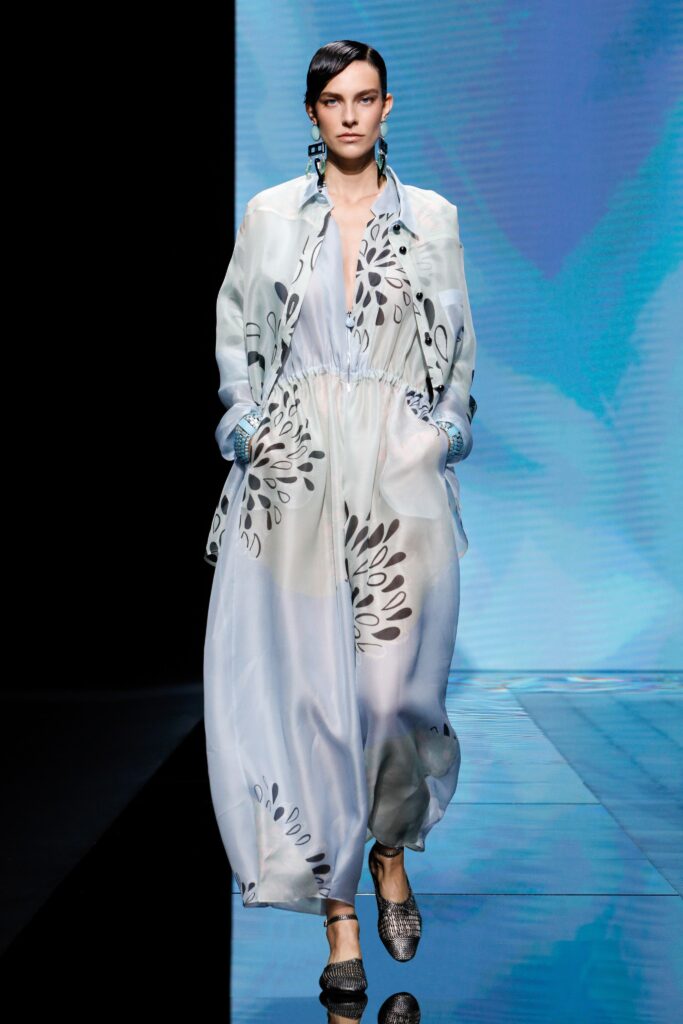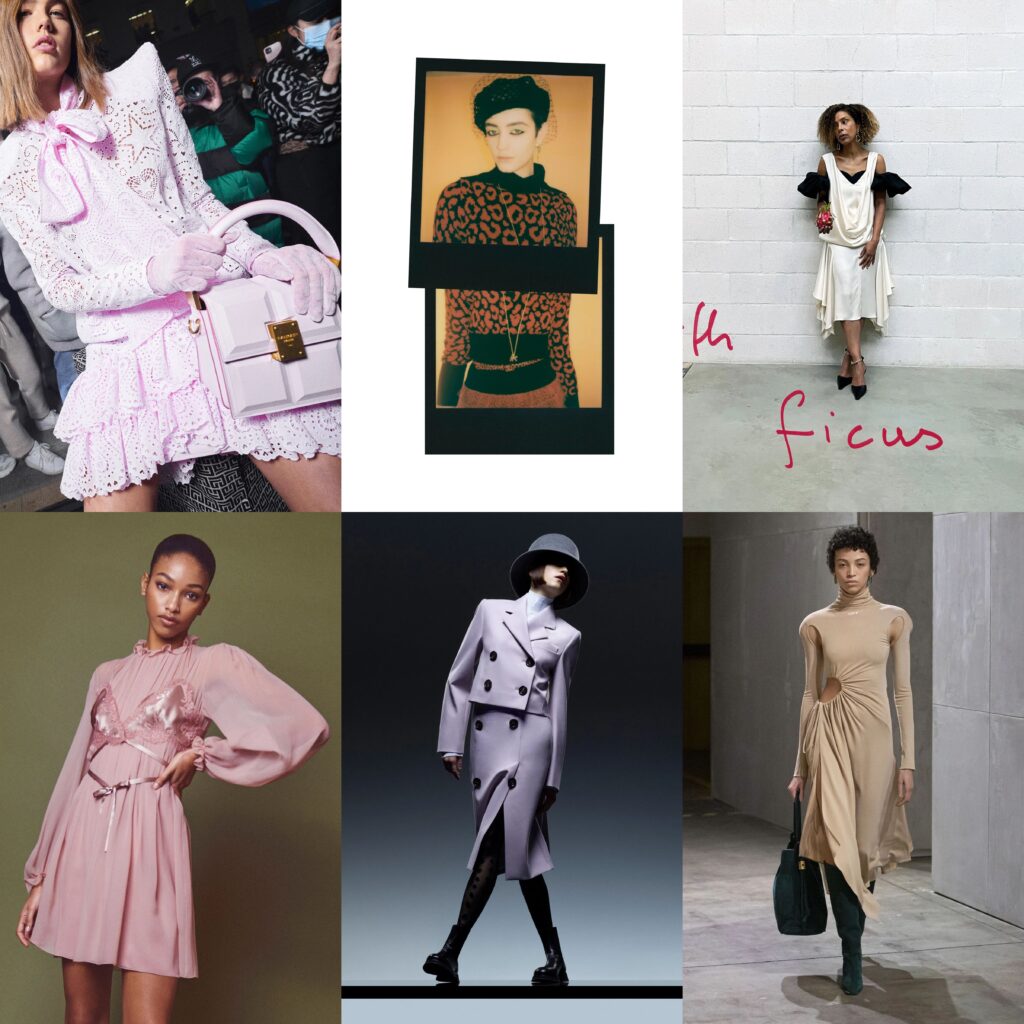A subscriber to my weekly email asked (WHAT?…you don’t subscribe? …goodness, it’s free and lots of info over there – here’s the link. Remember you can always unsubscribe, but you won’t cause it’s full of goodies, including discounts on my resources.) So the subscriber remarked that haute couture is not meant to be relatable. And yes, that’s true, and no, it’s not.
Couture is meant to be an experimental outlet for designers to play with designs and what they can be and can do. At the same time,

When the Grunge started, it was all about anti-fashion and against anything that looked skilled, finished, and especially highly technical. Couture still had designers who did highly skilled work, but the unskilled look took over. Some designers who still styled and designed the old way were Valentino, Oscar de la Renta, and Lagerfeld. But Armani still does elegantly beautiful and highly skilled clothes to wear. Left is from Armani’s Spring, 21 collection and about the weirdest thing I could find. All his clothes are imminently wearable!
The onslaught of the Instagramers and the proliferation of unedited and therefore often haphazard, irregular, and confusing fashion reporting caused by a massive influx of information that is neither organized nor thoughtful lead to an even greater discordance and turmoil in the reporting of fashion.
This is a real problem: how to make sense of the senseless, or as a psychologist friend of mine once said, “How do you communicate Greek to a Frenchman so he can understand?” The answer is that you can’t. The whole idea of the question is to realize that 1.) the Greek guy will fail, no matter how hard, or diligently he tries, and 2.) the Frenchman will be left confused no matter what the Greek guy says.
OK, so what does that mean in relation to fashion? And how do we make sense of this mishmash mess of Couture that once used to allow for artistic development but now seems to have a totally different focus? It’s all about the message. The current thinking is that if the designer doesn’t have a message, then he/she is irrelevant and not doing his/her proper job. If the designer doesn’t have certain views and espouses certain mores, then he/she can be ignored and often ridiculed. So the pressure is on to project a message which is primary and not a style or a look or even a creative solution on how to look more flattering. I would even go so far as to say that some designers’ purpose is overriding about the message and not the task at hand with literally translated is high sewing for clients – or good sewing for clients.
It’s a little like fixing a dinner of iceberg lettuce and jelly beans and calling it a “playful” message because the message is more important than the meal. I think we would all agree that misses the point. The point of eating is to nourish our physical and hopefully psychological part of our body, and iceberg lettuce with jelly beans might nourish our mind. Still, it falls way short of being nourishing for our body.

And I’m not saying that message isn’t important. I’m saying that if your occupation is a clothing designer and message is your most important priority, and I might re-think that. In the real world, as a designer for other people, if they came to me and I started espousing alien life forms taking over the world and incorporating fitting and design techniques for alien-life-form shapes instead of human shapes, I wouldn’t be in business very long.
This sort of off-the-topic thinking creates a huge hole for folks simply wanting pretty designs and flattering looks. It especially creates a huge hole for we sewists who are always looking for inspiration and ideas. Messages and messaging in design are great, but let’s do that with a practical sense of the design and style as the priority and not the second or third.
This is the sort of style and thinking that gave Vera Wang her first boost in fashion design. When she set out to find a wedding gown for her own wedding, she was woefully met with ugly, unflattering, and totally awful choices, so she decided to have her own gown made. That started a whole new career for her, and thank heavens because those designs were classic, totally wearable, and immensely flattering for the customer. Vera also had a great message, but she’s kept true to her work mantra that the design has to be good first, and then the message can be heard.
For we sewists, I miss the days of WWD, Town & Country, Vogue, Bazaar, and other magazines that would be filled with socialites donning their best for a new event or just being out; I miss the seasonal shows that everyone waited to see what glorious new fashion trend or look was going to take to the runway; I miss the plethora of beautiful clothes that were elegantly and “highly” sewn (haute couture) and designed; and I miss the emphasis on line and style that was so common among designers.

Even with the plethora of goofy looks out there, we can still draw some pretty clear signals.
The dress is still in good order with most designers.
The waist (and remember you don’t have to have one to make a waist wannabe in your garment) is alive and well.
And knits and stretch are featured a lot – something I’m very fond of!
And although I would love more, maybe this isn’t all that bad because it forces us sewists to be more adventuresome in our sewing and styling designs. And by adventuresome, I mean learning new sewing techniques, sewing with unfamiliar fabrics, thinking about different variations and iterations of your core patterns, and most of all, growing in our own knowledge of what we really like and what we really look good in.
